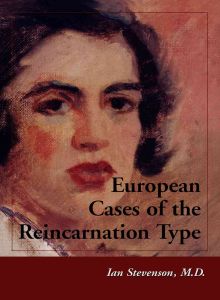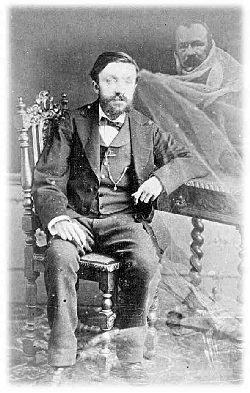
Parapsychology is the study of alleged psychic phenomena and other paranormal claims, for example, those related to near-death experiences, synchronicity, apparitional experiences, etc. Criticized as being a pseudoscience, the majority of mainstream scientists reject it. Parapsychology has also been criticised by mainstream critics for many of its practitioners claiming that their studies are plausible in spite of there being no convincing evidence for the existence of any psychic phenomena after more than a century of research.

Reincarnation, also known as rebirth, transmigration, or metempsychosis (Greek) is the philosophical or religious concept that the non-physical essence of a living being begins a new life in a different physical form or body after biological death. Resurrection is a similar process hypothesized by some religions in which a soul comes back to life in the same body. In most beliefs involving reincarnation, the soul is seen as immortal and the only thing that becomes perishable is the body. Upon death, the soul becomes transmigrated into a new infant or animal to live again. The term transmigration means passing of soul from one body to another after death.
Dissociative identity disorder (DID), previously named multiple personality disorder and commonly referred to as split personality disorder or dissociative personality disorder, is a member of the family of dissociative disorders classified by the DSM-V, DSM-V-TR, ICD 10, ICD 11, and Merck Manual for diagnosis. Dissociative identity disorder is characterized by primarily dissociative disorder symptoms, secondary key symptoms are shared with complex PTSD, Borderline and Schizotypal Personality disorders and tertiary key symptoms are shared with fibromyalgia, sleep disturbances, eating disorders, and body dysmorphic symptoms. Personality states alternately show in a person's behavior; however, presentations of the disorder vary. Dissociative identity disorder is usually caused by excessive and unendurable stress and or trauma, which commonly happens in childhood. The sense of a unified Identity develops from a variety of experiences and sources. In a child who is overwhelmed, the factors that should've blended together or become integrated overtime instead remain separate. Childhood adversity and abuse often leads to the development of dissociative identity disorder, but not exclusively.
Psychosomatic medicine is an interdisciplinary medical field exploring the relationships among social, psychological, behavioral factors on bodily processes and quality of life in humans and animals.
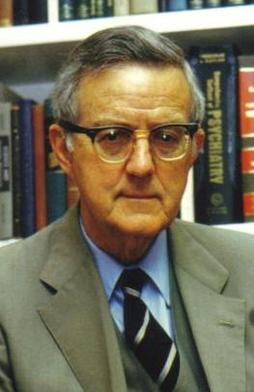
Ian Pretyman Stevenson was a Canadian-born American psychiatrist, the founder and director of the Division of Perceptual Studies at the University of Virginia School of Medicine.

Xenoglossy, also written xenoglossia and sometimes also known as xenolalia, is the supposedly paranormal phenomenon in which a person is allegedly able to speak, write or understand a foreign language that they could not have acquired by natural means. The term derives from the Ancient Greek xenos (ξένος), "foreigner" and glōssa (γλῶσσα), "tongue" or "language". The term xenoglossy was first used by French parapsychologist Charles Richet in 1905. Claims of xenoglossy are found in the New Testament, and contemporary claims have been made by parapsychologists and reincarnation researchers such as Ian Stevenson. Doubts have been expressed that xenoglossy is an actual phenomenon, and there is no scientifically admissible evidence supporting any of the alleged instances of xenoglossy.
Near-death studies is a field of psychology and psychiatry that studies the physiology, phenomenology and after-effects of the near-death experience (NDE). The field was originally associated with a distinct group of North American researchers that followed up on the initial work of Raymond Moody, and who later established the International Association for Near-death Studies (IANDS) and the Journal of Near-Death Studies. Since then the field has expanded, and now includes contributions from a wide range of researchers and commentators worldwide. Research on near-death experiences is mainly limited to the disciplines of medicine, psychology and psychiatry.

Twenty Cases Suggestive of Reincarnation is a 1966 book written by psychiatrist Ian Stevenson on claims of spontaneous recall of information about previous lives by young children. The book focuses on twenty cases investigated by the author. It has been translated into seven foreign languages.
Erlendur Haraldsson was a professor emeritus of psychology on the faculty of social science at the University of Iceland. He published in various psychology and psychiatry journals. In addition, he published parapsychology books and authored a number of papers for parapsychology journals.

Acharya Godwin Samararatne was one of the best known lay meditation teachers in Sri Lanka in recent times. During his teaching career he was based at his Meditation Centre at Nilambe in the central hill country near Kandy. After his death in March 2000 letters and tributes poured in as many people around the world attested to the impact that Godwin and his teaching had made on their lives.

Life Before Life: A Scientific Investigation of Children's Memories of Previous Lives is a 2005 book written by psychiatrist Jim B. Tucker, which presents an overview of more than 40 years of reincarnation research at the University of Virginia, into children's reports of past-life memories. The book also discusses "birthmarks and birth defects that match those of a deceased person who is identified by the child". The foreword to the book is written by Ian Stevenson.
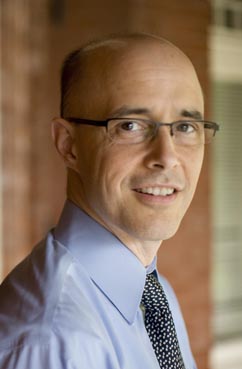
Jim B. Tucker is a child psychiatrist and Bonner-Lowry Professor of Psychiatry and Neurobehavioral Sciences at the University of Virginia School of Medicine. His main research interests are documenting stories of children whom he claims remember previous lives, and natal and prenatal memories. He is the author of Life Before Life: A Scientific Investigation of Children’s Memories of Previous Lives, which presents an overview of over four decades of reincarnation research at the Division of Perceptual Studies. Tucker worked for several years on this research with Ian Stevenson before taking over upon Stevenson's retirement in 2002.
Satwant Pasricha is the head of Department of Clinical Psychology at NIMHANS, National Institute of Mental Health and Neurosciences at Bangalore. She also worked for a time at the University of Virginia School of Medicine in the USA. Pasricha investigates reincarnation and near-death experiences. Pasricha co-authored the 2011 book Making sense of near-death experiences, which was Highly Commended in the Psychiatry category at the 2012 British Medical Association Book Awards.

Old Souls: The Scientific Search for Proof of Past Lives is a non-fiction book by journalist Tom Shroder. An editor at The Washington Post, Shroder traveled extensively with psychiatrist Ian Stevenson of the University of Virginia, who conducted past life and reincarnation research in Lebanon, India and the American South. Shroder's journalistic experience makes this book a valuable review of an often disparaged subject.

A Doctor's Report on Dianetics: Theory and Therapy is a non-fiction book analyzing Dianetics. The book was authored by physician Joseph Augustus Winter, with an introduction by German gestalt therapy research psychiatrist Frederick Perls.

Where Reincarnation and Biology Intersect is a 1997 book by psychiatrist Ian Stevenson, published by Praeger. The book is about birthmarks and birth defects ostensibly associated with reincarnation. Where Reincarnation and Biology Intersect is written for the general reader and is a condensation of a two-part monograph Reincarnation and Biology: A Contribution to the Etiology of Birthmarks and Birth Defects.
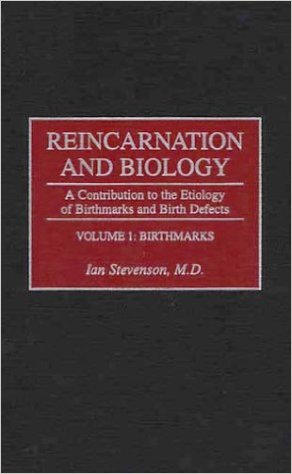
Reincarnation and Biology: A Contribution to the Etiology of Birthmarks and Birth Defects is a 1997 two-part monograph written by psychiatrist Ian Stevenson and published by Praeger. Where Reincarnation and Biology Intersect is a condensation of the two books written for the general reader.
Robert F. Almeder is Professor Emeritus of Philosophy at Georgia State University. He is known in particular for his work on the philosophy of science, and has also written on the philosophy of mind, epistemology and ethics. He is the author of 24 books, including The Philosophy of Charles S. Peirce (1980), Death and Personal Survival (1992), Harmless Naturalism: The Limits of Science and the Nature of Philosophy (1998), Human Happiness and Morality (2000), and Truth and Skepticism (2010).

Arthur Guirdham (1905–1992) was an English physician, psychiatrist, novelist, and writer on the Cathar sect, alternative medicine, ESP and reincarnation.
Antonia (Tonia) Mills is a professor emeritus in First Nations studies at the University of Northern British Columbia, Canada. Her current research interests include First Nations land claims, religion and law, and reincarnation research. Mills met Ian Stevenson in Vancouver in 1984 and was impressed with his reincarnation case studies. Since 1964, she has done field work with the Beaver Indians.
